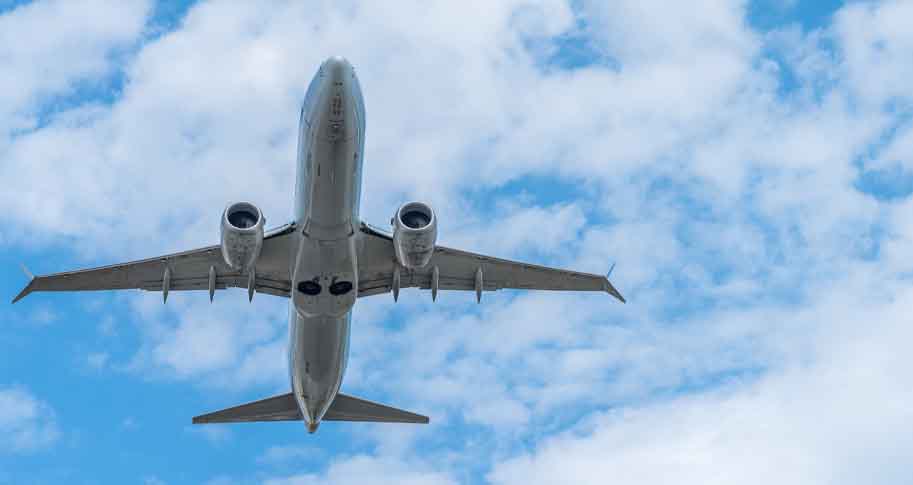
Boeing was once an unchallenged titan in the aviation industry. At its core was engineering excellence and a focus on safety. However, the company has experienced a dramatic shift in its trajectory. Safety issues came to a head with the two Boeing 737 MAX airplane crashes in 2018 and 2019. And again, in early 2024, safety issues arose with the door that blew off a Boeing 737 MAX plane.
How could a company built on ensuring aviation excellence and safety end up here and still be struggling to regain its footing? Is it even possible at this point to turn things around? Can the company regain its reputation and the trust of its stakeholders?
I think it can.
A strategy for the company to regain its stature in the industry will not be a quick fix. However, for a company this storied and significant in the airline industry, it’s worth the effort.
Losing Altitude: The Foundational Drift
A Purposeful Foundation That Drifted: in the early 20th century, Boeing emerged as a beacon of innovation in aviation. Its foundation and purpose were rooted in a relentless pursuit of technological excellence. Engineers, not just business executives, led the company, ensuring that every aircraft was a testament to safety and innovation. The company’s rallying cry was safety, not finance. This ethos was not just a business strategy; it defined the company’s core purpose. It was a source of pride for all employees, creating a sense of belonging and a shared mission.
This purposeful history and commitment to safety made the two Boeing 737 MAX crashes that claimed 346 lives in 2018 and 2019 baffling to many. More concerning is how the company, after five years of recovery time, had another significant safety lapse in early 2024 when the door blew off a Boeing 737 MAX 8 passenger airplane at 16,000 feet.
Prior to these recent incidents, it seemed that Boeing was adhering to its core purpose and the basic ethics principle of keeping its word with its stakeholders. In Boeing’s case, keeping its word meant manufacturing safe planes so that airlines, pilots, airline assistants, and the flying public would not have to worry or even think about whether they were traveling on a Boeing 737 MAX airplane. Now, everyone thinks about it.
Unfortunately, Boeing’s reputation for safety has been shattered by these events. While a quick glance may cause one to think that the company just recently lost its way, a deeper look reveals that the root problem can be traced back almost 25 years to a series of poor individual decisions by senior leaders and the deteriorating company culture that resulted.
The Turning Point: Boeing’s merger with McDonnell Douglas in 1997 was more than a business deal; it was a cultural shift. McDonnell Douglas was known for its emphasis on efficiency and creating shareholder value. This finance focus was a stark difference from Boeing’s historical focus on innovation and safety led by its engineers. In many respects, it marks the beginning of Boeing’s decline that is playing out today.
Leadership Turbulence and Company Purpose Overshadowed by Profits
Condit’s Decisions and Scandals: the merger with McDonnell Douglas occurred early in the eight-year tenure of Boeing CEO Philip Condit (1996-2003). At the time, the merger was seen as bringing in a more disciplined financial approach to complement the engineering focus.
Over time, it was clear that the balance between the two had not been adequately maintained, and the focus became profits at the expense of safety. McDonnell Douglas focused on cost-cutting and upgrading older aircraft – not building new ones with engineering excellence. This was a major cultural shift for Boeing.
Additionally, Condit moved the company’s headquarters from its original home in Seattle to Chicago. This move created a separation between executives and most of Boeing’s engineers, who were (and still are) based in Seattle. (And today, the separation is even greater. In 2023, CEO Dennis Calhoun moved the company’s headquarters to the East Coast.) Distance between a company’s headquarters and its workforce is a common cause of deterioration in a company’s culture.
These two poor business decisions by Condit were exacerbated by his own ethical shortcomings. He resigned in 2003 in the face of two ethics scandals. One involved the company’s possession of thousands of pages of a competitor’s proprietary and confidential documents. The other involved questions about whether large government contracts were awarded through improper influence.
Stonecipher’s Scandals and Effect on Culture: Condit was replaced by Harry Stonecipher, the former McDonnell Douglas CEO. He only lasted fifteen months before he, too, was forced to resign in the face of his own ethics scandal for having a relationship with a subordinate and allegedly influencing her upward career trajectory.
During his short tenure, Stonecipher proudly defended the changes he made to Boeing’s culture, which further degraded its foundational purpose of engineering excellence and safety. Stonecipher is famously quoted as saying, “When people say I changed the culture of Boeing, that was the intent, so that it’s run like a business rather than a great engineering firm.” A comment like that leaves one to wonder – aren’t engineering firms businesses too?
In line with his McDonnell Douglas background, Stonecipher also made the decision to incrementally improve older model airplanes as opposed to designing new aircraft that would have replaced the 737. In doing so, he ignored the proposal of Boeing’s head of commercial aviation to build a newly designed airplane. This sent a signal that, in hindsight, was very telling.
McNerney’s Ill-Fated Strategic Direction: in the wake of Stonecipher’s resignation the company turned to an outsider from GE, Jim McNerney. McNerny’s tenure was longer (2005-2015) and provided some stability from the two prior CEO’s ethics scandals.
However, he continued Stonechiper’s strategic direction of improving the company’s older model airplanes instead of opting to design new ones. On McNerny’s watch, the company designed and implemented the single point of failure MCAS system, without retraining pilots. This error resulted in the 2018 and 2019 crashes.
Muilenberg’s Misguided Response: unfortunately, the CEO who followed McNerney in 2015, Dennis Muilenberg, saw his tenure end in 2019 in the wake of his response to the two crashes. His aggressive approach with regulators and prioritization of speedy market re-entry over comprehensive safety checks contributed to the erosion of Boeing’s credibility.
Calhoun and The Current State of Affairs: with the Alaska Airlines door disaster, it is clear that the current CEO, Calhoun, still struggles with systemic issues despite attempts to refocus the company on safety. The geographic and metaphorical distance between the company’s leadership and its engineering teams continues to exist, especially since Calhoun’s education and professional background are largely based in finance and accounting.
Moreover, Boeing has a heavy reliance on outsourced, manufactured airplane components that appears to be coupled with lax oversight of manufacturing safety processes. All of this has again raised questions about Boeing's commitment to its foundational purpose of engineering excellence and safety.
Charting a New Course: Boeing’s Roadmap to Regaining Trust
Elevating Safety Above All Else: Boeing’s path to redemption must be paved with a renewed commitment to safety. This renewal involves more than just a pause in manufacturing facilities for a day or two to discuss the importance of safety. It must include concrete action, a cultural renaissance per se - where every process, decision, and innovation are filtered through the lens of safety. A transparent, safety-first approach must be the cornerstone of all operations, echoing the company's original ethos.
Leadership that Understands the Skies: engineering is business. Boeing’s board of directors should call for a new CEO with a strong engineering background and a deep understanding of aviation's complexities. Such a move would send a signal that this hire is more than just a leadership change; it's a symbolic return to Boeing's roots.
This leader must champion Boeing's founding purpose and guide the company back to its position as a leader in safe, innovative aviation. Such a CEO must also focus on integrity, the cornerstone of all good leaders and strong corporate cultures. The CEO must also look to the future and build a high-quality pipeline of potential successors, all of whom should share the CEO’s dedication to safety, engineering excellence, and integrity.
Emphasizing Purpose and Aligning It with Strategy: Boeing must align its business strategy with its core purpose. This realignment involves setting clear, measurable goals that prioritize safety and innovation while still attaining achievable financial goals.
The company should look to successful models like Johnson & Johnson, where company values are deeply integrated into business strategies and decision-making processes. Regaining lost trust is not a short-term issue. It takes time and dedicated effort each day.
The journey ahead for Boeing is challenging yet essential. The company must confront and learn from its past while forging a future that resonates with its historic commitment to safety and engineering innovation. Doing so should help the company regain its reputation and reestablish trust with passengers, pilots, flight attendants and airlines, so that Boeing can once again soar to the heights of aviation excellence.






